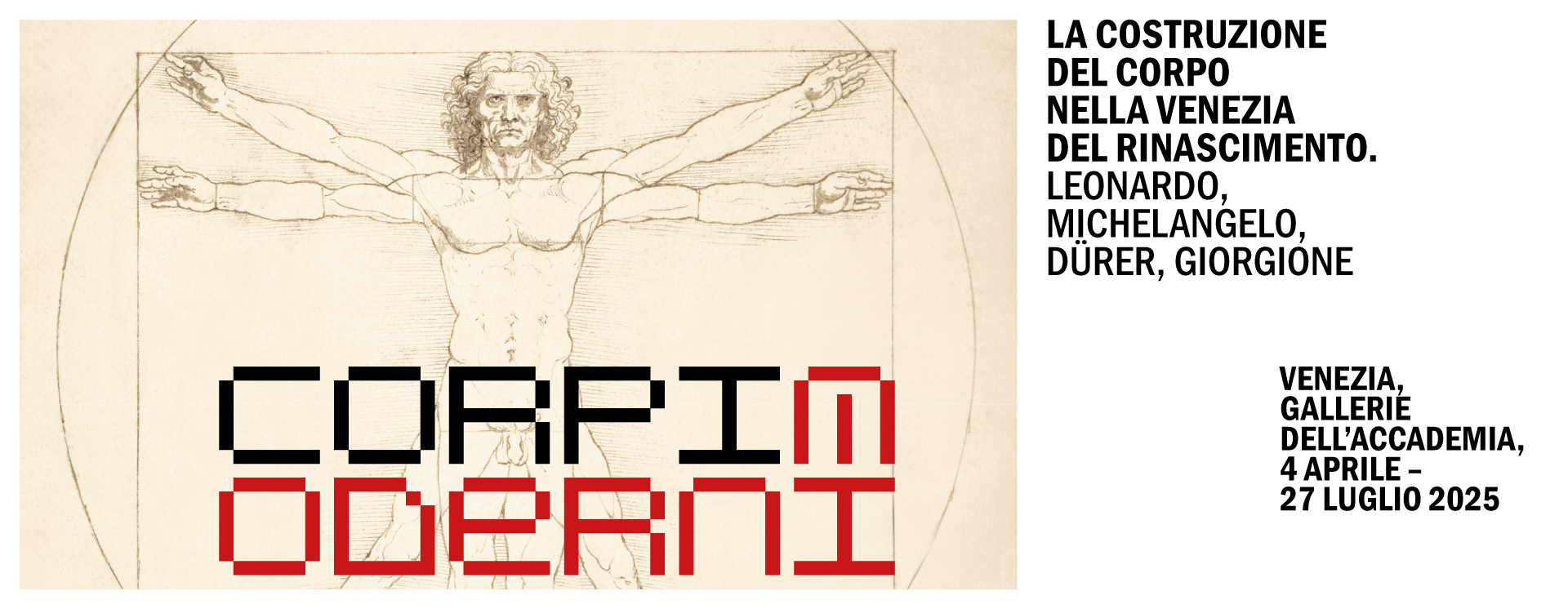The exhibition proposes a fascinating investigation into the conception of the human body that emerged in Renaissance Venice between art, science and material culture, exploring, more precisely, the way in which, for the first time, the body was conceived as a field of scientific investigation, an object of desire and a means of self-expression. Indeed, the Renaissance marks a turning point in which the body is no longer just a biological reality, but a cultural construction, an element shaped by science, art and social conventions. The exhibition brings together outstanding works of art, including drawings, paintings and sculptures from the most prestigious international and national museums and collections, some of which are being presented in Italy for the first time. It includes masterpieces by Leonardo da Vinci - whose famous Vitruvian Man will be on display -, Michelangelo and Albrecht Dürer, as well as Giovanni Bellini and Giorgione, alongside scientific instruments, anatomical models, books, clothes, miniatures and everyday objects. The exhibition is divided into three large chapters.
The first, entitled “The body unveiled: knowing”, explores the discovery of the human body as an object of scientific and medical study, with Padua and Venice being two centres of European importance for research and publishing. For the occasion, Leonardo's Vitruvian Man, one of the icons of the Gallerie dell'Accademia and of the whole world's cultural heritage, will once again be on public display after six years. The famous drawing will be juxtaposed, for the first time, on one hand, with an ancient Greek metrological relief, triggering a reflection on the concept of “measurement” and “ideal”, which has very ancient origins; and, on the other, it will be contrasted with the ruthless realism of Dürer's famous Nude Self-portrait, from the Klassik Stiftung Weimar, exhibited in Italy for the first time.
The second section, “The Naked Body: desiring”, analyses the portrayal of the body as an object to admire and desire. On one hand, the naked female body, portrayed by Venus lying and reclining on the landscape, according to the typical Renaissance style which continues to be popular today; on the other, the lyrical, suffering and sublime male body of the biblical saints and heroes, portrayed in the ancient style.
The third and final section, “The constructed body: self-representation”, illustrates the body as a space for cultural representation. Clothes, surgical treatises, cosmetic and body care accessories testify to the need of Renaissance men and women to adhere to social standards and models which were reflected in their depiction, with a specific inventory of symbols and trappings that defined the masculine and feminine. Standing out among the various items related to beauty is an extremely rare 16th-century chest, a sort of precious contemporary make-up box (private collection), with its contents of mirrors, perfumes and grooming objects, on loan from the Kunsthistorisches Museum in Vienna. But the exhibition also investigates the idea of overcoming the body, displaying the armour and mechanical prostheses first used during the Renaissance to replace limbs lost in war, corroborating the concept of the body as a field of experimentation, metamorphosis and transformation. Gesture, mimicry and physical exercise were, after all, intended to forge the body beyond its natural state.
Corpi moderni is a journey into the body of the early modern age, exploring themes that are only mistakenly understood to be exclusive to our time, bringing visitors closer to issues that dominate the sciences, arts and myths of today and of the past: nature and the future of humanity, sexuality and reproduction, beauty and ageing, the boundaries of the human, identity.
